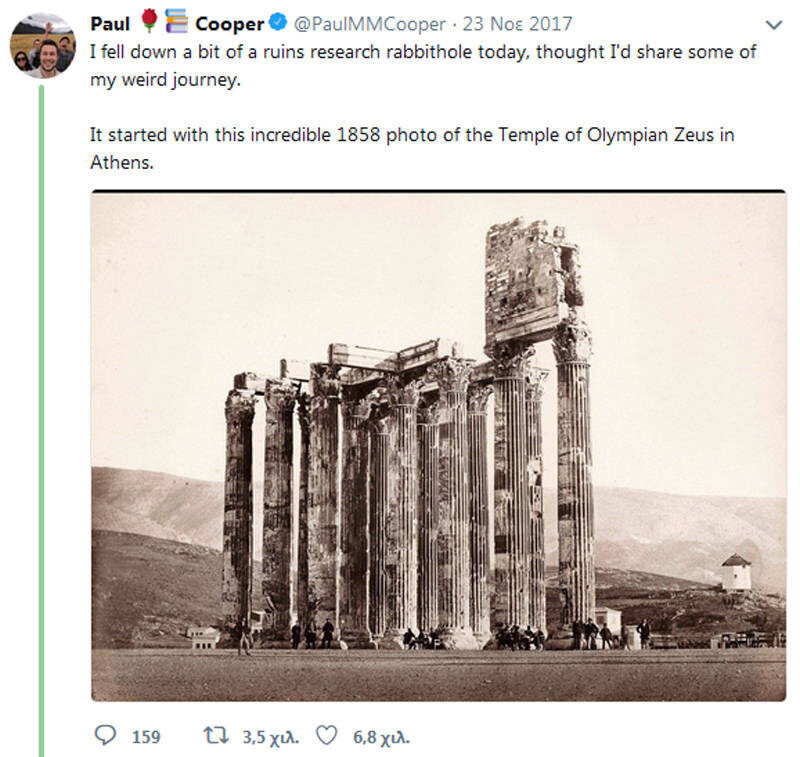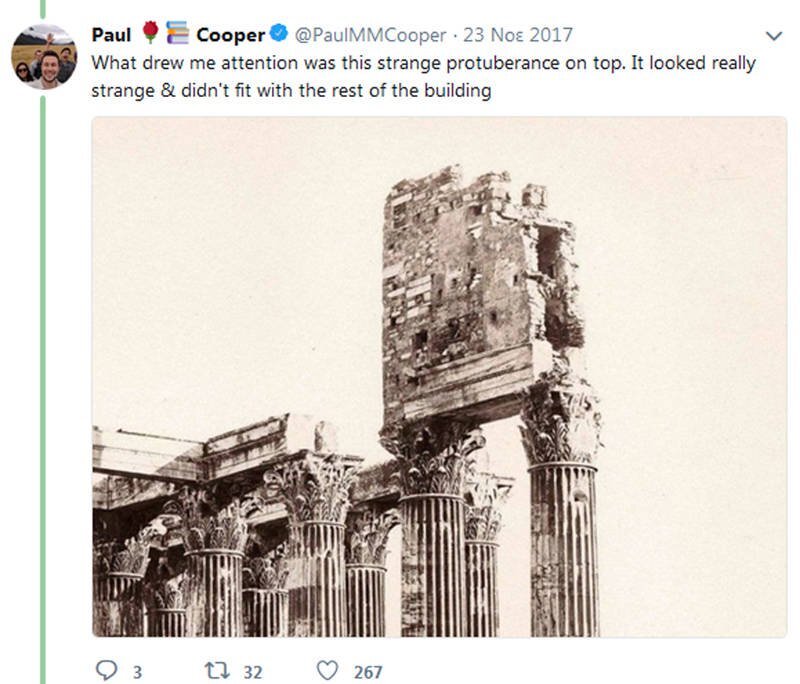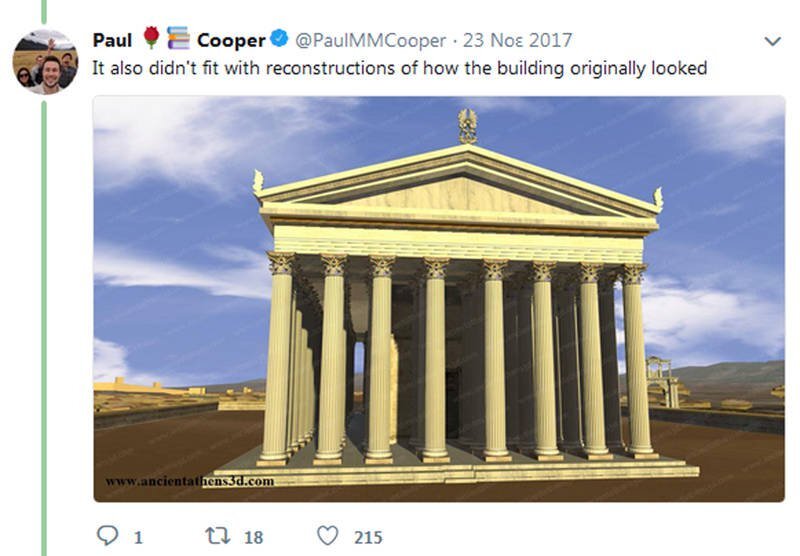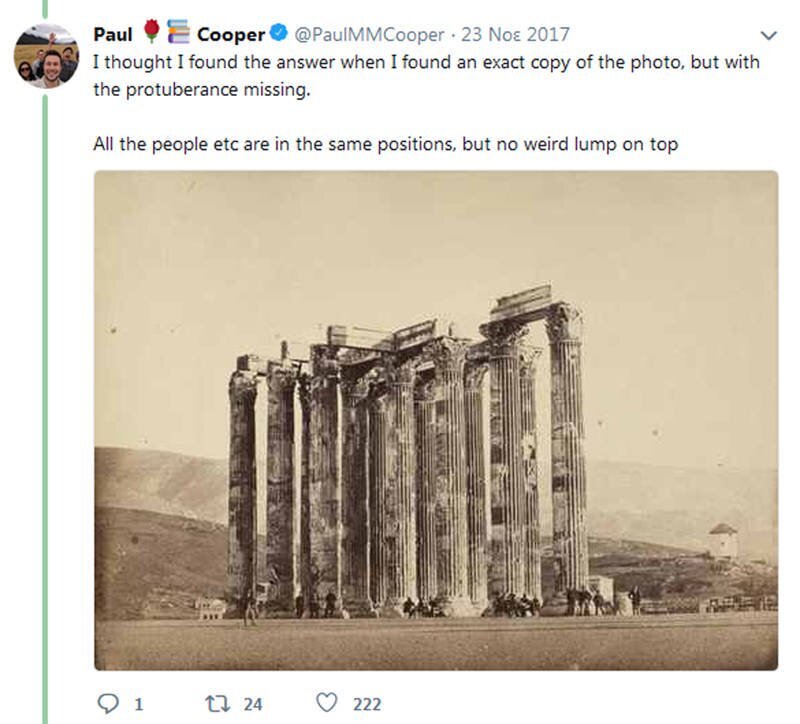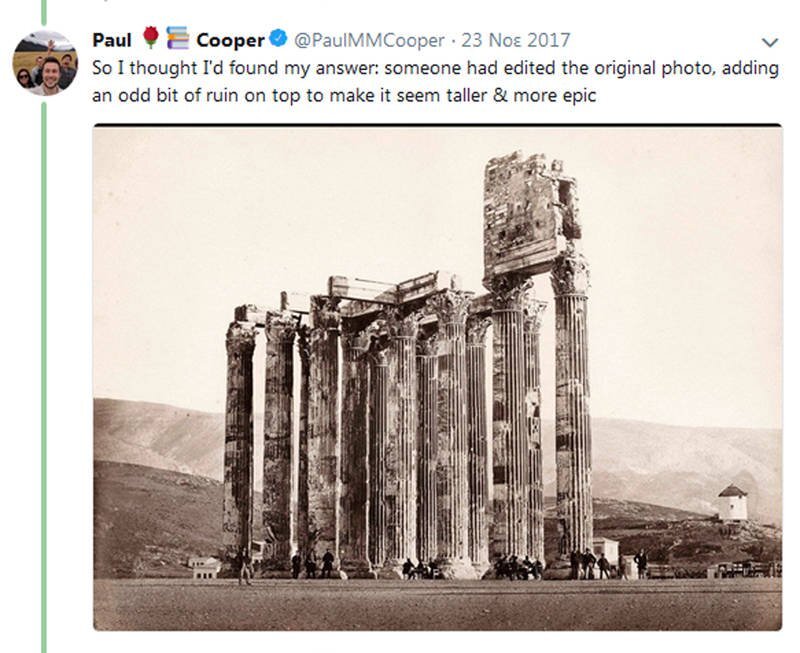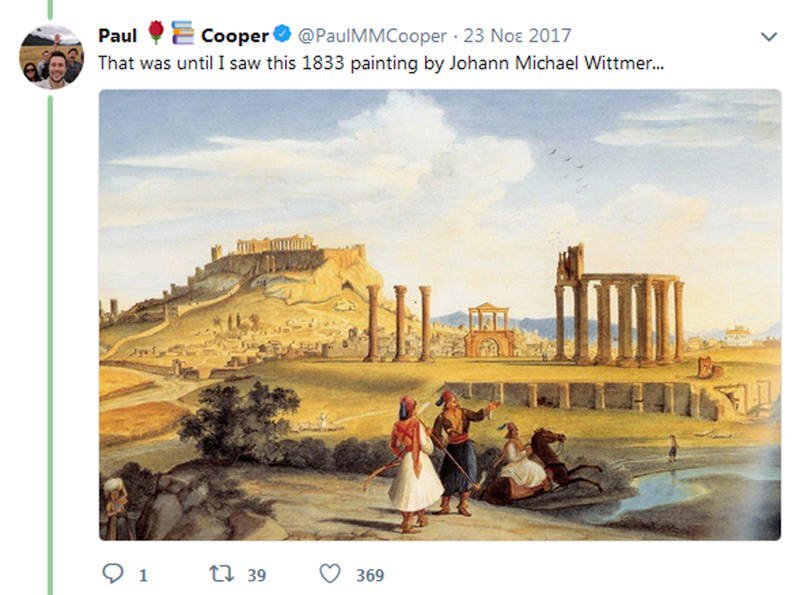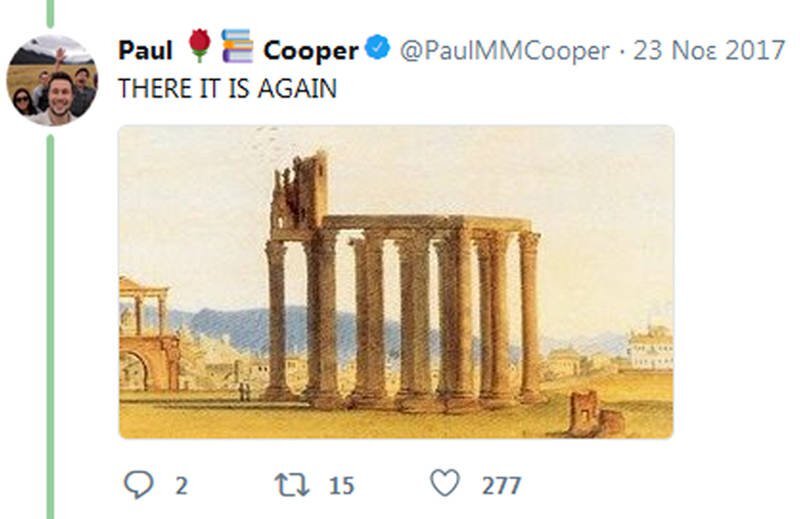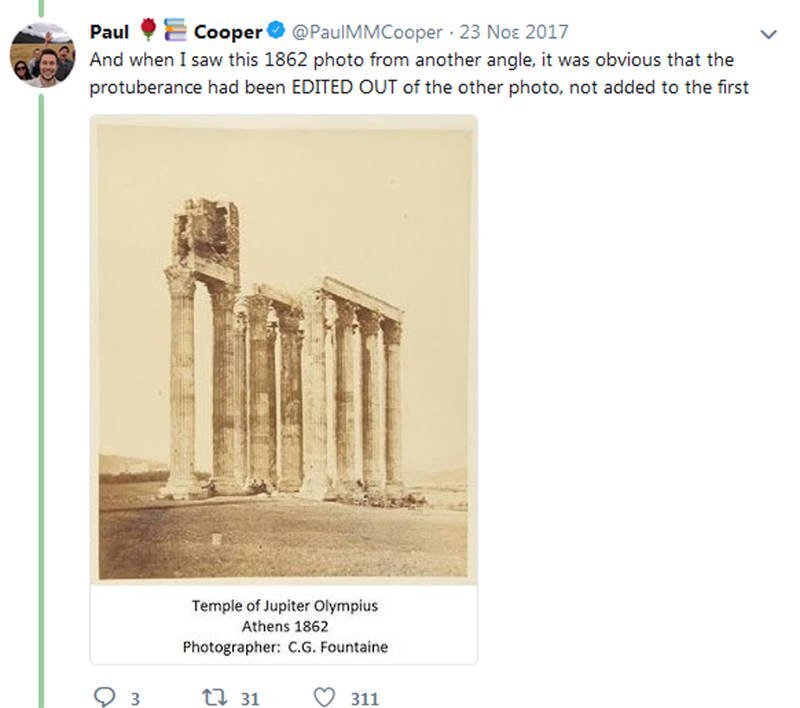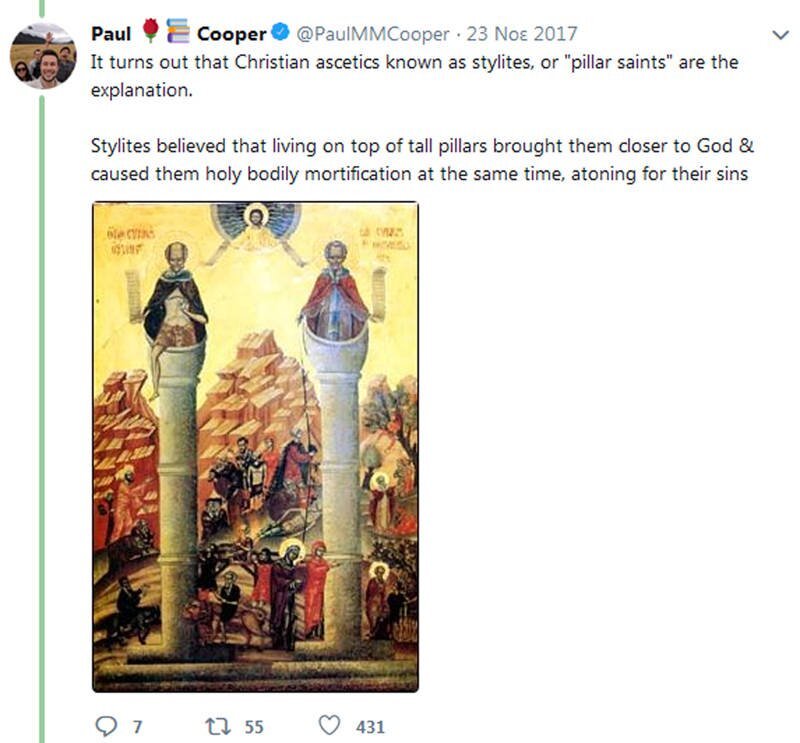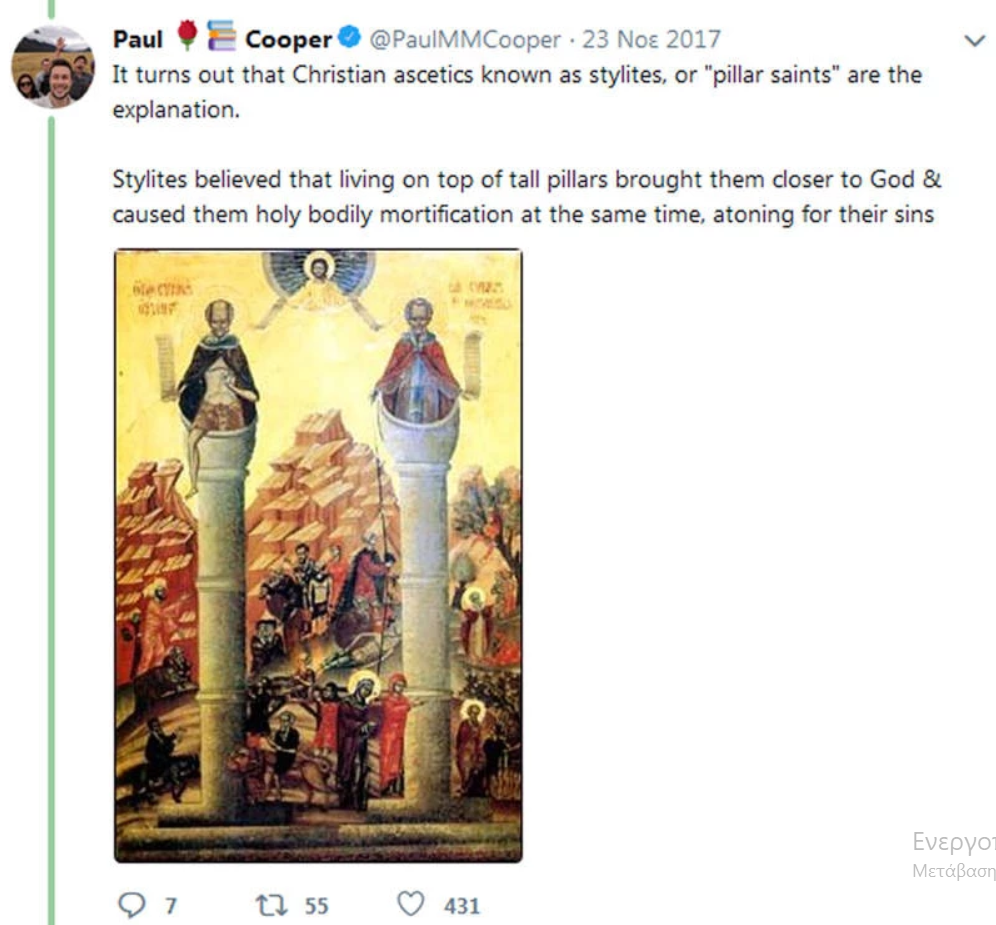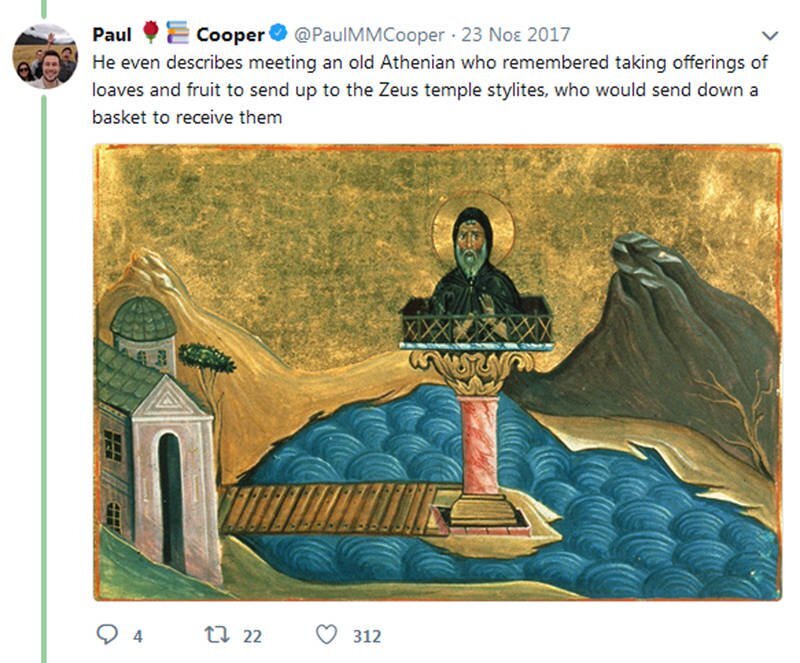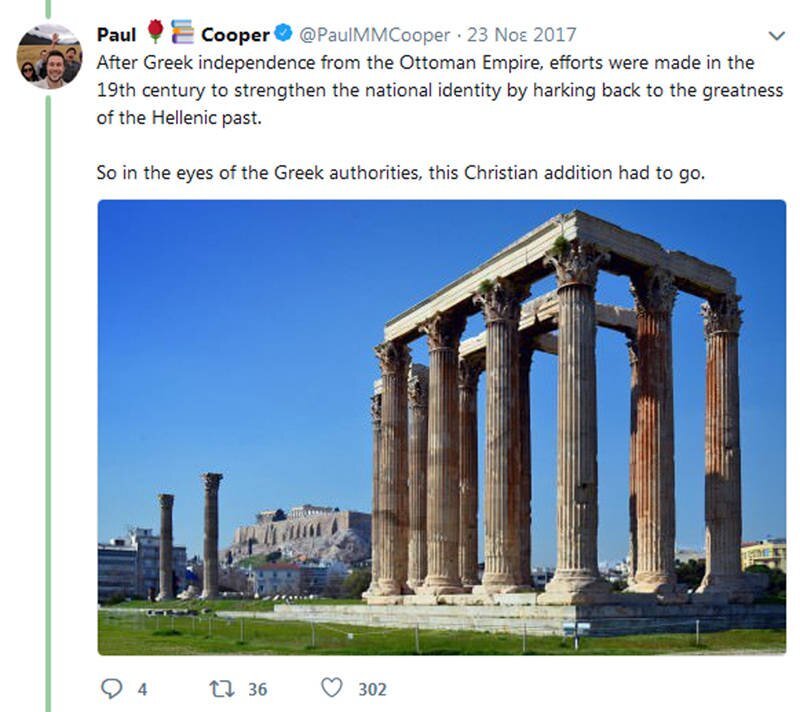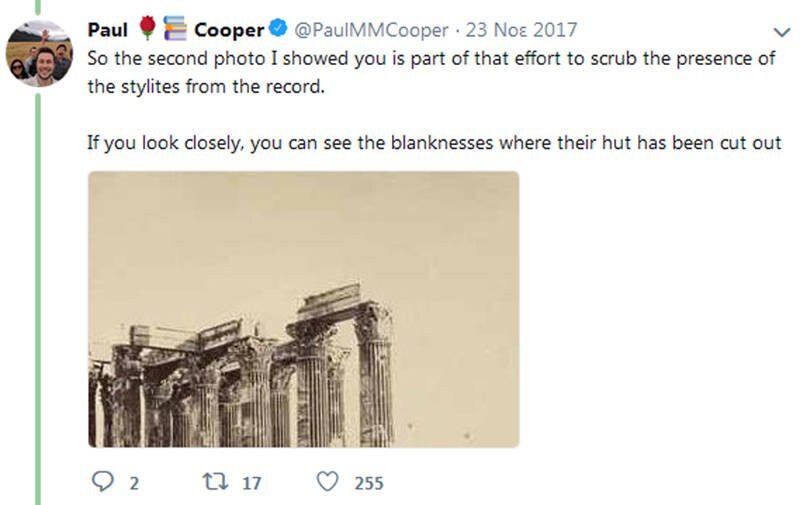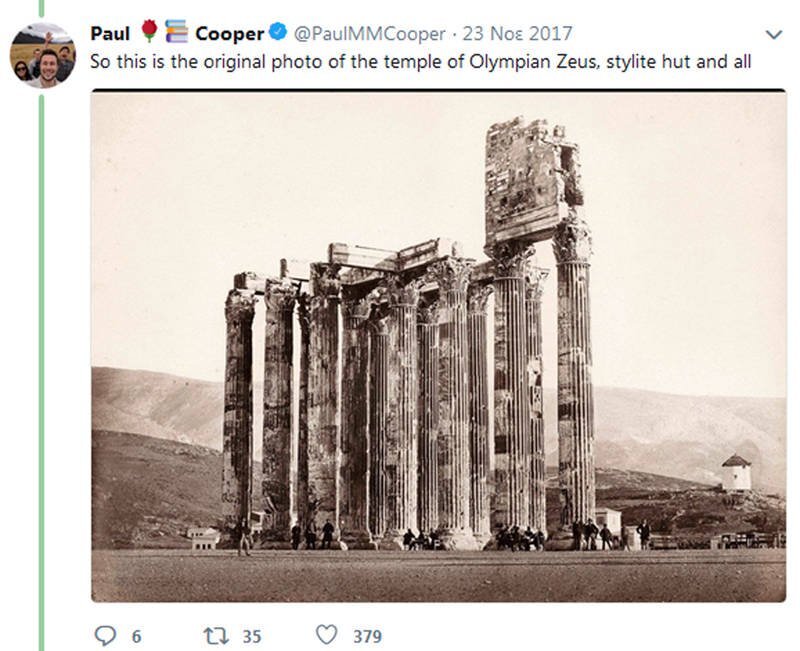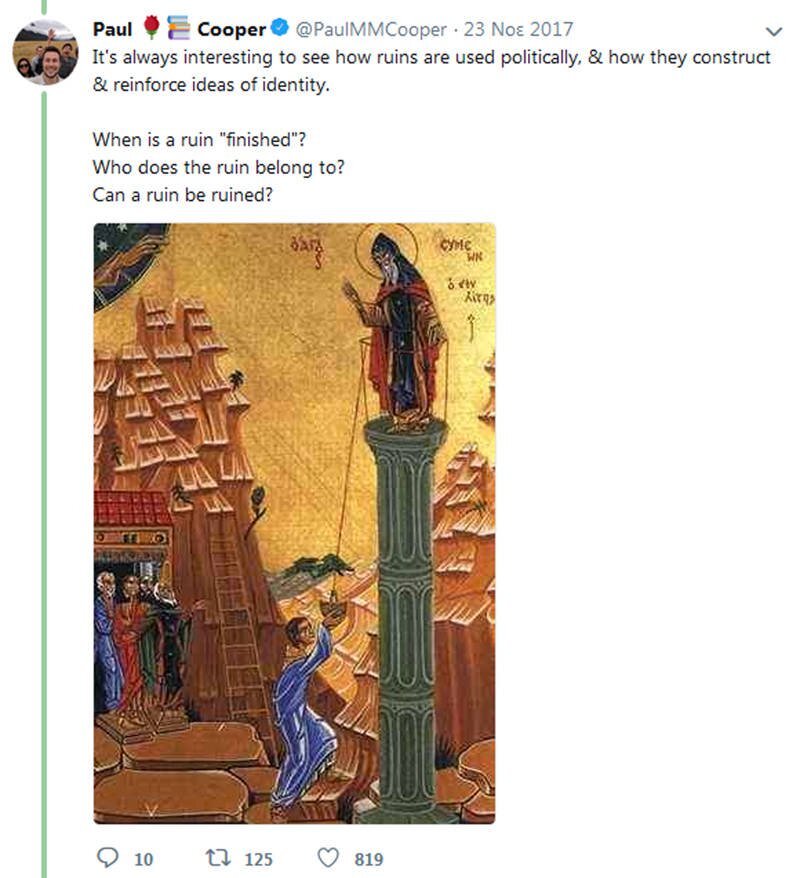The temple of Olympian Zeus is one of the characteristic landmarks of the city of Athens, whose image we all know well.
The construction of the largest Greek place of worship during the Hellenistic and Roman periods began in the time of Peisistratos, in the 6th century BC, but its construction followed on foot all the tragic adventures of the Athenian state, the Macedonian domination and then the Roman balance.
And it would not be completed until the 2nd century AD. by Emperor Hadrian, who was so enchanted and so fond of Greek grandeur. Colossal in size, Olympus, as it was alternatively called, had 104 Corinthian-style columns, though only a handful remains standing today.
We also know it as the Glorious Ruin, a remnant of another era. Historians speculate that the majestic temple must have been destroyed during the Byzantine period and its Pentelic marble used to construct other buildings.
Its first and extensive excavation took place in 1889-1896 by the British Archeological School of Athens, followed by one in 1922 by a team of German archeologists and completed in 1960 by the archeological team of Ioannis Travlos.
Since then it has been left in our consciousness as another ruined example of the famous architecture of our ancestors and left in its pale white.
But years passed and just in 2017, a British writer and researcher named Paul M.M Cooper stumbled upon a mystery. Born in London and with two degrees, Cooper writes best-selling books (like "River of Ink") that are firmly rooted in history.
During one personal study, he came across a photo with a lifespan of 160 years. A photo that showed the pillars of Olympian Zeus as no one had ever seen them before! What was this strange appendage on top of what was now left of the temple of Olympian Zeus?
The search would lead him to reveal the true story of a real architectural thriller. Which was spread even on Twitter and made social media the spearhead of historical study.
A picture of the temple very different
Cooper begins his electronic narrative by quoting an 1858 photograph of the Temple of Olympian Zeus in Athens, an "incredible photograph," as he hastens to describe it. The image that led him to delve deeper into the subject.
"What caught my eye was this weird part at the top. It looked really odd and didn't match the rest of the building," he notes of the historic 1858 image.
"And it also doesn't match the depictions of what the building originally looked like," he notes, citing the relevant image.
And now it's time for the mystery to unfold in all its glory: "I thought I had found the answer when I found an exact copy of the picture, but it was missing that part. All the people etc are in the same places, but no strange extensions on top".
"I thought I'd found the answer," he insists, "someone had mounted the original photo and added a weird piece of debris to the top to make it look bigger and more epic."
"This, until I saw this painting by Johann Michael Wittmer from 1833."
"And when I saw this 1862 photo from a different angle, it was now obvious that the knob had been cut out of the other photo and not added to the first."
It turned out that it was the Christian ascetics, known as stylites, or "saints of the pillars," according to the explanation. Stylites believed that living at the top of tall pillars brought them closer to God while causing a holy physical weakness that atoned for their sins.
"Sometime between the destruction of the temple in the 3rd century and its study by archeologists in the 19th century, Stylites had painstakingly erected a small stone hut on the temple's ruined columns."
In this 1922 article, "The Glory That Was Greece," Alexander Wilbourne describes the stories of locals who spoke of a long line of stylists who lived on top of the temple, bringing them food and water with ropes and buckets".
"He even describes an encounter with an Athenian who recalled receiving offerings of bread and fruit, which he sent to Stylites of the temple of Zeus, who came down with a bucket to collect them".
"After the independence of Greece from the Ottoman Empire, efforts were made in the 19th century to strengthen national identity by recalling the greatness of the Greek past. And so, in the eyes of the Greek authorities, the Christian addition had to go".
"So the second image I showed you is part of this effort to erase the presence of Stylites from the archive. If you look closely, you can see the gaps from the erasure of their hut".
"So this is the original photo of the temple from Olympian Zeus, with Stylites hut and everything else."
"It's always interesting to see how ruins are used politically and how they construct and reinforce notions of identity," he concludes.
These were the fruits of his research for a monument of Athens that is hard to imagine in a different version.




